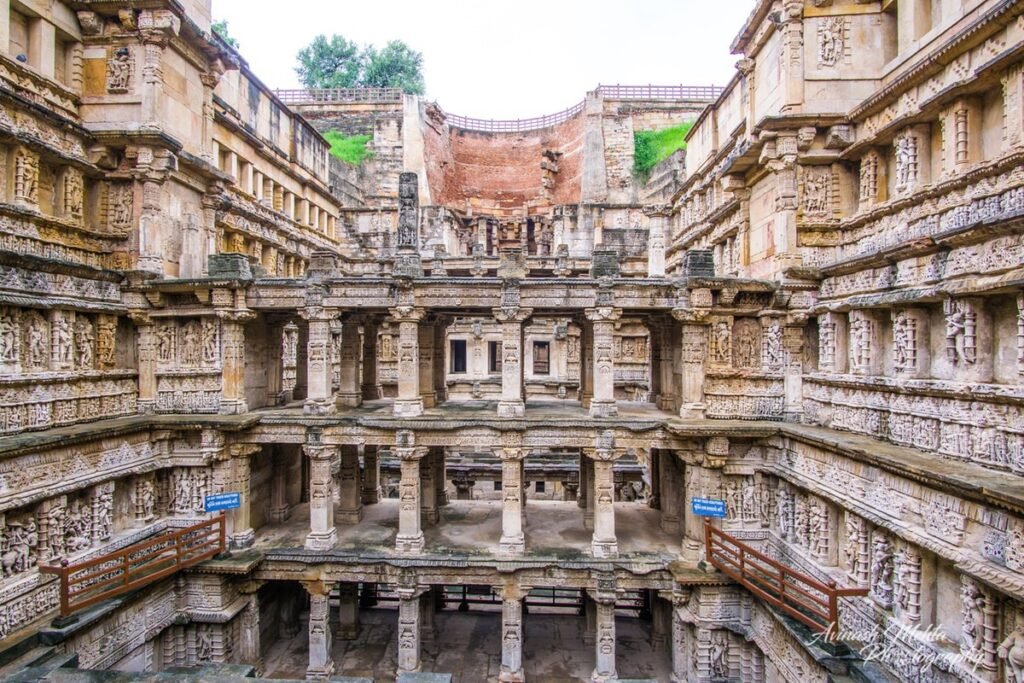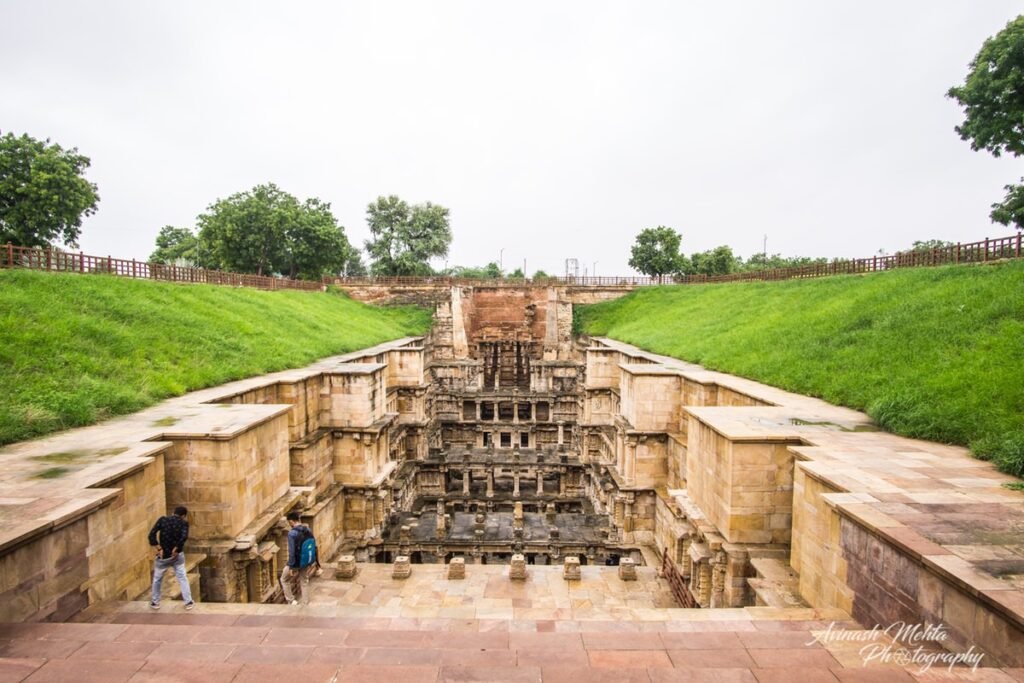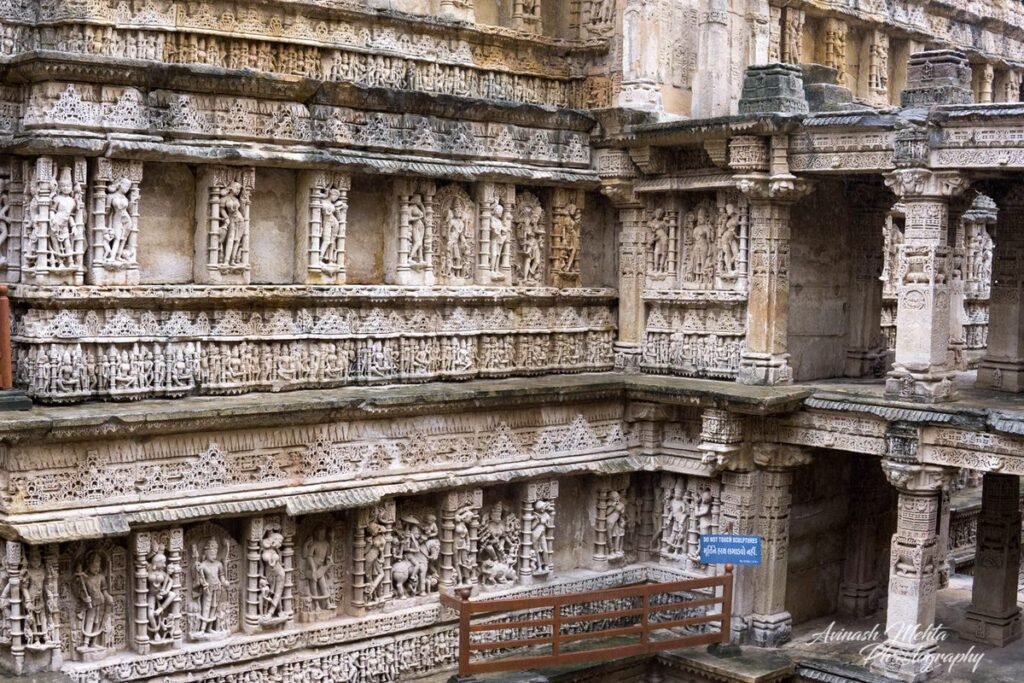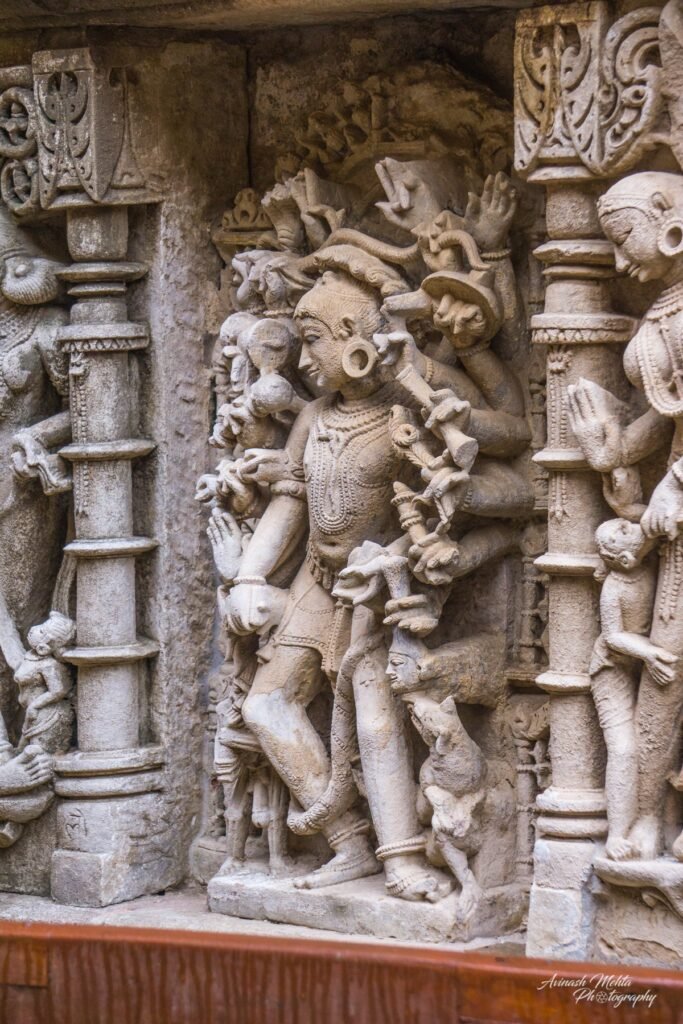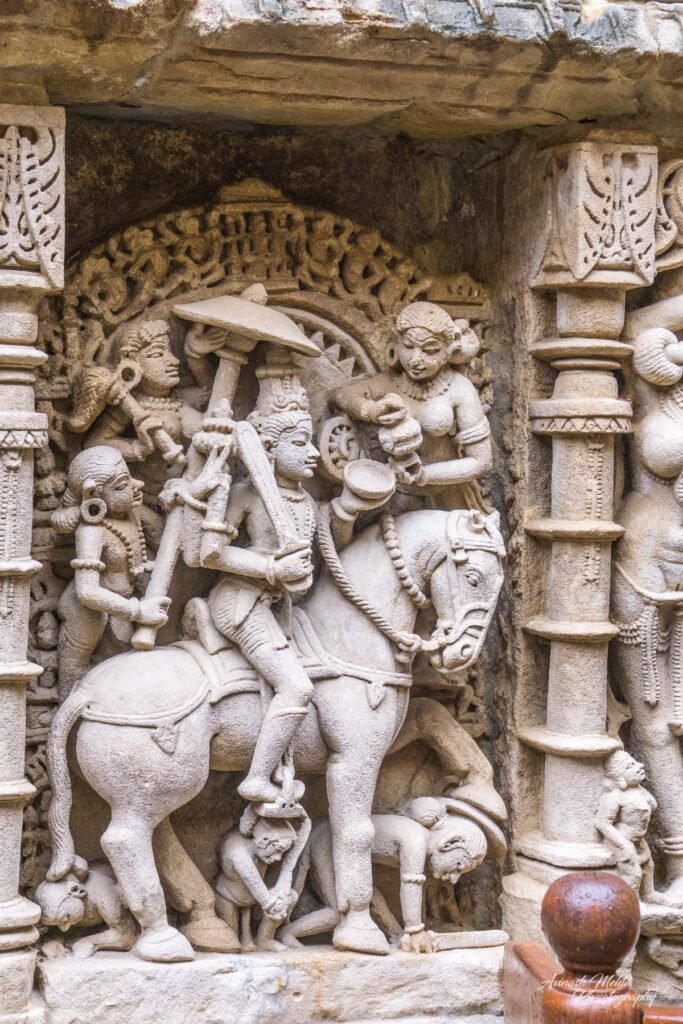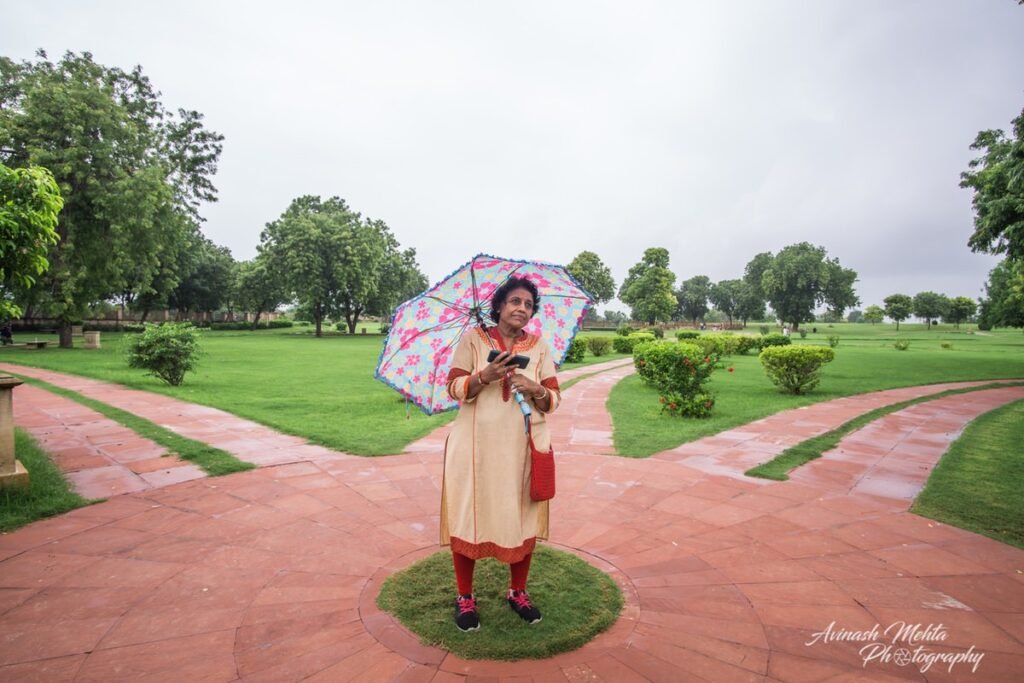11th century, Stepwell Rani Ki Vav, Patan, Gujrat, India
Today, I shall acquaint you with a seldom remembered history of the remarkable city of Gujarat. Patan, a thriving commercial centre, used to be the capital of northern Gujarat and once upon a time it was counted among the world’s most populous cities. A trip to Patan happened thanks to a conversation. I was getting bored sitting at home when a relative suggested a trip to Patan and its 108 Jain temples. This would be an ideal opportunity for photography too. Well, it was decided to visit Patan. My son promptly booked train tickets and made reservations at a guesthouse. Patan was known as Anhilpur. It was established by Vanraj Chavda in the 9th century AD, and later became the capital of the Chalukya dynasty of Gujarat. The city is known for its numerous Hindu and Jain temples, mosques and dargahs. Dynasties came and went. Patan suffered attacks in the 13th century but was reestablished as a centre of trade. Till the 14th century, when Ahmedabad became the capital of Gujarat, Patan was the centre of administration. If you visit Gujarat, do include Patan in your itinerary.
Today, I shall acquaint you with a seldom remembered history of the remarkable city of Gujarat. Patan, a thriving commercial centre, used to be the capital of northern Gujarat and once upon a time it was counted among the world’s most populous cities. A trip to Patan happened thanks to a conversation. I was getting bored sitting at home when a relative suggested a trip to Patan and its 108 Jain temples. This would be an ideal opportunity for photography too. Well, it was decided to visit Patan. My son promptly booked train tickets and made reservations at a guesthouse. Patan was known as Anhilpur. It was established by Vanraj Chavda in the 9th century AD, and later became the capital of the Chalukya dynasty of Gujarat. The city is known for its numerous Hindu and Jain temples, mosques and dargahs. Dynasties came and went. Patan suffered attacks in the 13th century but was reestablished as a centre of trade. Till the 14th century, when Ahmedabad became the capital of Gujarat, Patan was the centre of administration. If you visit Gujarat, do include Patan in your itinerary.
Rani ki Vav is an elaborate and exquisite example of the architectural genius of ancient India. A massive stepwell, Rani ki Vav is located in Patan in Gujarat. It was constructed in the 11th century when the Solanki dynasty ruled Gujarat. Rani kiVav was built by Raja Bhimdev’s consort, Rani Udaymati. She was the daughter of Raja Khengar of Junagadh. Traditionally, Indians have used a variety of water storage and conservation techniques, given that floods and droughts are a regular feature here. Water conservation and recharge systems include structures like Jhalara, Bawari, Talab, Johad, Ahar Pyne, Zing, Kuhl, Panam Keni, Khadin etc. Stepwells too were a popular alternative for water conservation. They were a subterranean water storage system. And Rani ki Vav is by far the most impressive and ornate stepwell found in India. It was constructed in the Maru-Gurjara style and tapped into the waters of River Saraswati. The Vav is designed to resemble an inverted temple whose deity is water. The stepwell consists of seven levels with each level displaying intricate carvings and sculptures. They depict mythological, religious and natural imagery. There are around 500 main sculptures, and over a thousand minor ones. images are mostly drawn from Vaishnav traditions and include gods and goddesses such as Ram, Vaman, Mahishasurmardini, Kalki, etc. The stepwell is 65mts long, 20 mts wide, and 28 mts deep. In the 13th century, a sudden geotectonic shift in the Sarasvati River bed left Rani ki Vav unusable. But, it was the flooding and the silting thereafter that left Rani ki Vv undisturbed for the next seven centuries in a high degree of preservation. It was rediscovered in the 1940s and in the 1980s, The Archeological Survey of India undertook a massive project to unearth and r store this stepwell. In 2014, Rani ki Vav was declared a UNESCO WORLD HERITAGE site. The complexity of construction, the intricacy of carvings and the aesthetic use of space in Rani ki Vav is a tribute to the mastery of Indian Architects and craftsmen. In 2018, the RBI decided to print Rani ki Vav on the new 100 rupee note.
रानी की वाव भारत के गुजरात राज्य के पाटण में स्थित प्रसिद्ध बावड़ी (सीढ़ीदार कुआँ) है। इस चित्र को जुलाई 2018 में RBI (भारतीय रिज़र्व बैंक) द्वारा ₹100 के नोट पर चित्रित किया गया है तथा 22 जून 2014 को इसे यूनेस्को के विश्व विरासत स्थल में सम्मिलित किया गया।[1]
पाटण को पहले ‘अन्हिलपुर’ के नाम से जाना जाता था, जो गुजरात की पूर्व राजधानी थी। कहते हैं कि रानी की वाव (बावड़ी) वर्ष 1063 में सोलंकी शासन के राजा भीमदेव प्रथम की प्रेमिल स्मृति में उनकी पत्नी रानी उदयामति ने बनवाई थी। रानी उदयमति जूनागढ़ के चूड़ासमा शासक रा’ खेंगार(खंगार) की पुत्री थीं। सोलंकी राजवंश के संस्थापक मूलराज थे। सीढ़ी युक्त बावड़ी में कभी सरस्वती नदी के जल के कारण गाद भर गया था। यह वाव 64 मीटर लंबा, 20 मीटर चौड़ा तथा 27 मीटर गहरा है। यह भारत में अपनी तरह का अनूठा वाव है।
वाव के खंभे सोलंकी वंश और उनके वास्तुकला के चमत्कार के समय में ले जाते हैं। वाव की दीवारों और स्तंभों पर अधिकांश नक्काशियां, राम, वामन, महिषासुरमर्दिनी, कल्कि, आदि जैसे अवतारों के विभिन्न रूपों में भगवान विष्णु को समर्पित हैं।[2]
‘रानी की वाव’ को विश्व विरासत की नई सूची में शामिल किए जाने का औपचारिक ऐलान कर दिया गया है। 11वीं सदी में निर्मित इस वाव को यूनेस्को की विश्व विरासत समिति ने भारत में स्थित सभी बावड़ी या वाव (स्टेपवेल) की रानी का भी खिताब दिया है। इसे जल प्रबंधन प्रणाली में भूजल संसाधनों के उपयोग की तकनीक का बेहतरीन उदाहरण माना है। 11वीं सदी का भारतीय भूमिगत वास्तु संरचना का अनूठे प्रकार का सबसे विकसित एवं व्यापक उदाहरण है यह, जो भारत में वाव निर्माण के विकास की गाथा दर्शाता है। सात मंजिला यह वाव मारू-गुर्जर शैली का साक्ष्य है। ये करीब सात शताब्दी तक सरस्वती नदी के लापता होने के बाद गाद में दबी हुई थी। इसे भारतीय पुरातत्व सर्वे ने वापस खोजा। भारतीय पुरातत्व सर्वेक्षण (एएसआई) ने सायआर्क और स्कॉटिस टेन के सहयोग से वाव के दस्तावेजों का डिजिटलाइजेशन भी कर लिया है।
बरसात के सुहाने मौसम में इस का नजारा बड़ा ही मनमोहक व प्रिय लगता है पर्यटको के आकर्षण वाली इस बावडी़ के चारों और इतनी सुन्दर मनमोहक लैंडस्केपिंग आपका मन मोह लेगी ।
